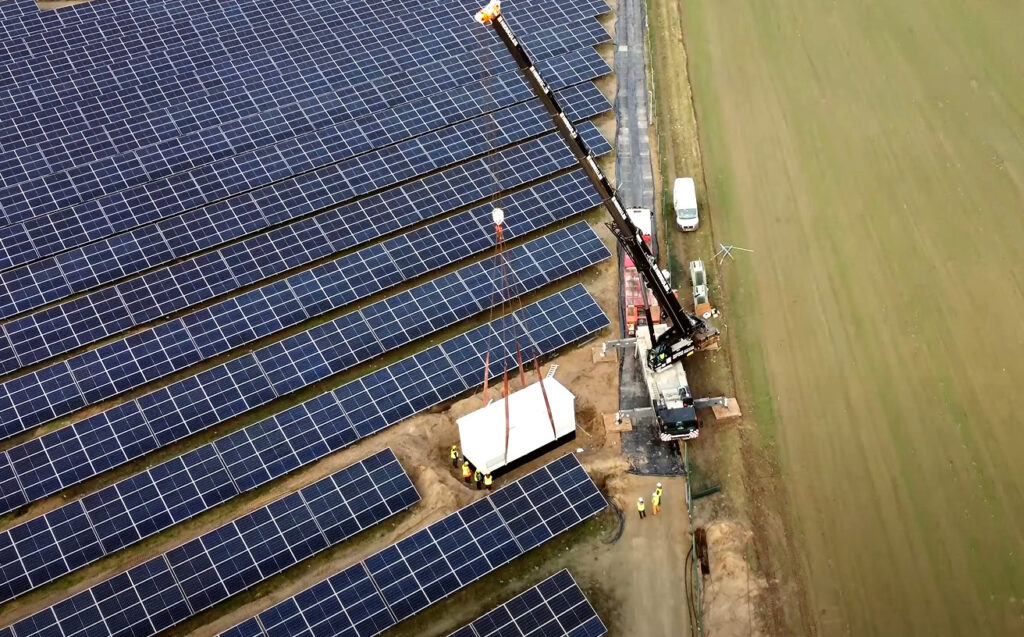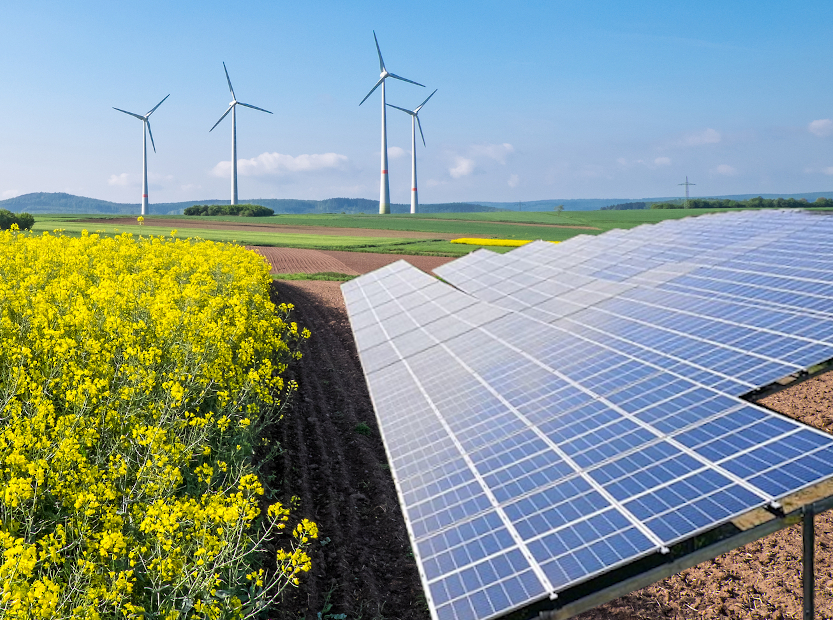No one needs to be convinced of the importance of obtaining energy from renewable sources. Wind or photovoltaic farms are leading the way in reducing environmental pollution and contributing to clean energy production.
Largest photovoltaic power plants in Poland:
- Zwartowo (204 MW)
- Brudzew (70MW)
- Witnica (64MW)
- Wielbark (62MW)
- Stępień (58 MW)
The largest farm in Central and Eastern Europe, located in Zwartowo, is capable of powering 153,000 households.
How can ROAD SYSTEM plates help with power plant construction?
Well, transporting the transformer station requires a crane ride. And this is where the role of plastic plates begins!
Farms are most often built on agricultural plots, which are mostly difficult to access. So how can the ground be easily, economically and quickly hardened for the passage of heavy equipment?
The answer is unequivocally – use ROAD SYSTEM plates.

In the case above, ROAD SYSTEM 200 panels were laid on fairly stable ground, allowing the over 100 tonne vessel to pass. A geotextile fabric was spread under the slabs to act as a separator. The main advantage of its use is that, once the surface is removed, the plates are only slightly soiled and do not require time-consuming cleaning. After a slight refresh, they are successfully applied to the next implementation.
And the time to make such a road?
For a team of 3 people, a 200m road is just 8 hours of work! Thanks to the use of dedicated connectors, assembly is just a matter of screwing in two screws. The plates are quite light, weighing 37 kg, so they can be carried comfortably by two people. Compared to heavy concrete plates, which require a crane to install, ROAD SYSTEM installation saves time and money.
ROAD SYSTEM 400 plates, which are designed for loads close to 120 tonnes, can be used on soils with less stability.
